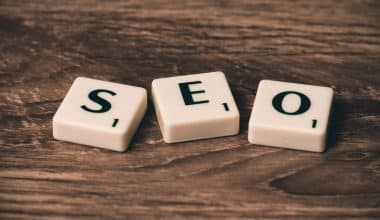Buying products and services for a business from a vendor outside the company is known as business procurement. The procurement process entails locating things, negotiating the terms of the sale, buying the goods, carefully checking them, and keeping meticulous records of every step. You can maintain the smooth operation of the company you work for by learning more about business procurement. This post will expose you to learning what procurement is in the business cycle, procurement types, supply chain, and how it differs from purchasing.
What Is Procurement in Business
The act of a firm purchasing an item or service for internal usage is known as business procurement. In order to carry out their routine, businesses frequently purchase goods and services. Compared to larger organizations, smaller firms often make significantly smaller purchases of goods and services. Raw materials, maintenance supplies, consumer products, processed materials, office equipment, site design, marketing services, and recruitment are just a few examples of the goods and services that a business might purchase.
How Procurement Works
The management of procurement and procurement processes may consume a sizable percentage of a company’s resources. Typically, procurement budgets provide managers with a set amount they can use to buy the products or services they require. Due to the fact that the capacity to purchase particular goods or services can impact how lucrative operations are, the procurement process is frequently an important component of a company’s strategy. Processes for procuring goods and services are frequently governed by corporate standards, which are frequently centralized by accounting controls from the accounts payable (AP) division. The preparation and processing of a demand as well as the final receipt and approval of payment are all included in the procurement process.
This can encompass a wide range of activities, including supplier research and selection, standard setting, price negotiating, and inventory control. As a result, for successful procurement, many major firms may need assistance from a few different corporate departments. The procurement process involves a number of steps, including:
- Selecting the necessary goods and services
- Complete a buy request form and ask several suppliers for estimates.
- Work out a deal and a price with the supplier, then finish the purchase order.
- Obtain the delivery, then make payment.
Accounting for Procurement
Since procurement entails procuring goods and/or services for the revenue goals of the organization, procurement expenditures are typically included in the financial accounting of a firm. As a result, some businesses might employ a chief procurement officer (CPO) to oversee these initiatives. A CPO therefore:
- Controls procurement requirements
- Collaborates with accounts payable to guarantee effective payment and integration of procurement standards
- Participates in teams that make judgments about procurement when there are several competitive bids
There are various ways to split and examine procurement processing. Hence, companies and industries manage the acquisition of direct and indirect expenses in different ways. Also, companies that sell goods as opposed to companies that provide services will likewise manage costs differently.
Procurement Cycle
There are several stages in the procurement cycle that call for careful preparation and execution. The company’s procurement strategy is driven in large part by each step. The six phases of the procurement cycle are as follows:
#1. Procurement Planning Cycle
At this stage, the issue is recognized and a preliminary review is carried out to confirm the specifics of the issue. Examples include the type of product required and the best approach to the issue at hand.
#2. Requirement Definition Procurement Cycle
The following step after planning is requirement definition. A statement of work is a document that lists every prerequisite for solving problems. It is an important phase since the specifications show how well the potential vendors comprehend the issue.
#3. Sourcing Procurement Cycle
The company will get in touch with the supplier at this time and convey all the specifics of the procurement, such as the terms and conditions, delivery dates, and specifications for the good or service. Suppliers will inspect, investigate, and submit a proposal in response to a company’s offer.
#4. Evaluation and Selection Procurement Cycle
The business will choose the finest bid from among those submitted by suppliers after assessing them. The decision is made in accordance with how clearly the solution is laid forth in the proposal.
#5. Contract Awarding Procurement Cycle
The selected supplier receives the contract. If the company wants more details regarding a particular area of the plan, further discussions will be held.
#6. Contract Administration Procurement Cycle
Once the contract has been issued to the supplier, it is crucial to manage it in order to address any potential legal problems. Verifying that the provider is following all contract conditions is the goal. Everything at this stage is managed, from deliveries being made on time to the cost of the deliverables.
Types of Procurement
Direct, indirect, and service procurement are the three different categories. Using a purchase order or contract to obtain products or services directly from a supplier is known as direct procurement. Purchasing products or services from a source indirectly involves going via an intermediary, like an agent or distributor. The process of purchasing services from a service provider is known as service procurement. Let us look at the following types of procurement listed below:
#1. Indirect Procurement
The process of acquiring goods and services that are not directly related to the organization’s primary business is known as indirect procurement. Items like office supplies, janitorial services, and IT equipment are all types of indirect procurement.
It often entails a different set of procedures and standards for choosing suppliers, and it is controlled by a team outside of the direct procurement team. Indirect procurement aims to boost efficiency and cut costs without sacrificing quality.
#2. Direct Procurement
The process of purchasing goods and services directly from suppliers who are a member of your company’s supply chain is referred to as first-tier or direct procurement. In other terms, direct procurement refers to the practice of purchasing goods or services directly from a supplier or manufacturer, typically without the use of an intermediary. Direct types of procurement have various benefits, including cheaper pricing and greater control over quality. Direct procurement types also can have certain drawbacks, too, like long lead times and less flexibility.
#3. Service Procurement
The process of obtaining services from a third party is known as service procurement. The primary distinction between the buying of products and that of services is that with services, you are purchasing a certain end or result as opposed to a tangible commodity. Prior to purchasing services, it’s crucial to determine exactly what you require from the provider. You may start creating criteria for evaluating possible service providers once you have a firm grasp of your demands.
What Is Procurement in Supply Chain
A successful procurement service contributes to increased corporate profitability. Procurement is a critical component of supply chain management. These include sourcing, haggling, buying, and tracking supplies in addition to procuring goods and services. As technology improvements have pushed us toward a fast-paced lifestyle in recent years, the significance of procurement in supply chain management has grown. Even if we have come a long way from the days of having physical records of every purchase, it is still crucial to carefully choose the products and services needed for business transactions.
Key Performance Indicators of Procurement:
An organization must regularly adhere to a number of KIPs to improve the effectiveness of the procurement process, monitor progress, and align the team with business goals. These KPIs include the following:
- Cycle time for a purchase order
- Lead time, defect rate, and supply availability of suppliers
- Number of vendors
- Fulfillment accuracy
- ROI of the procurement process
Steps of Procurement Process:
- Identification: The first step is identification, during which a procurement team determines the organization’s initial need for specific products and items. Restocking may be necessary for new or previously ordered goods.
- Request Submission: The procurement team must submit a formal request to the business with details regarding the item, quantity, and pricing for any high-volume purchase of products. Following the finance team’s approval, the procurement team can proceed with the purchase plan.
- Vendor evaluation: The team must decide which things need to be purchased before determining the suppliers from which to make purchases.
- Negotiation: The procurement team negotiates with the seller to lower the price to the best value or to renegotiate the sale after receiving the quote.
- Purchase Order: Once the quantity and price are agreed upon, a purchase order is created with all the specifics of the order specified for the supplier to fulfill.
- Inspection of supplied products: The procurement team must examine the quantity of supplied products and any damaged goods once they have been delivered.
- Invoice generation and recordkeeping: After the goods are delivered, an invoice is created, and the organization’s finance staff pays it.
Procurement vs Purchasing
The words procurement and purchasing appear to mean the same thing in plain English. However, they are far from being so in a business setting. While they both have certain parallels, one is more concerned with transactional tasks, and the other is with the strategic product-sourcing process. In discussions about procurement vs. purchasing, confusion is not unusual. In actuality, this distinction does not really matter much for smaller firms. Not understanding the distinction between the two, though, might hurt your company as it expands. Here, we examine this distinction in greater detail.
What is Purchasing in Business? Procurement vs Purchasing
The procedure used whenever your company or organization acquires items or services to achieve its objectives is referred to as purchasing. If done using company funds, paying staff salaries, leasing new office space, or even purchasing a new microwave for the office pantry are all regarded as purchases.
What is Procurement in Business? Procurement vs Purchasing
The sourcing, negotiating, and selection of goods and services that are typically of greater importance to the organization are referred to as procurement in more technical language. A more deliberate method of acquiring goods and services in the company is procurement.
Key Differences Between Purchasing and Procurement
While working in a similar environment, purchasing and procurement are not the same thing. To have a successful system in place, it is essential to have a thorough understanding of how the two vary. The following are some key distinctions between purchasing and (vs) procurement:
#1. Goals
The focus of purchasing is on the price of your order, whereas the focus of procurement is on the value generated and the total cost of ownership.
#2. Pricing and Value
Business procurement is more focused on the long-term value that the products or services procured contribute to the company. On the other side, purchasing is focused on the price or cost that the desired materials come with.
#3. Vendor Partnership
Building connections with vendors is generally not a top priority in purchasing management because it only works with the current supplier base. On the other hand, one of the main responsibilities of procurement management is developing long-term, cooperative partnerships with suppliers who are strategically recruited.
#4. Transactional VS Relational Focus
Another difference between purchasing and procurement procedures is that purchasing processes are relational, whereas procurement processes are transactional.
#5. Approach: Proactive vs. Reactive
The processes, justifications, and goals of the two indicate that procurement adopts a proactive approach while the purchase is more reactive. Insofar as they involve a higher level of planning and strategy before, during, and after procuring the necessary resources, procurement processes are proactive.
#6. Risk Evaluation and Mitigation
As a strictly transactional activity, buying does not allow for risk assessment and reduction. While interacting with vendors or suppliers, an organization may run across a number of supply chain hazards. Operational risk, financial risk, risks with data security, etc.
#7. Operations Sequence
The process flow for procurement is substantially more complex than that for purchase. It entails everything, including requirement identification, sourcing, contract closure, and record-keeping. Ordering, expediting, and paying are the three steps that make up the majority of the purchasing process.
What Are the 5 Main Things in Procurement?
Every single one of them offers a piece of the secret to successful procurement:
- Procurement chain flow
- Supplier risk management
- Building a capacity for predictive analytics
- A centralized supplier database
- Inclusion in the company’s collective innovation system.
What Are the 4 Main Roles of Procurement?
Sourcing, negotiating, managing contracts, and managing supplier relationships are the four primary functions of procurement.
What Is the Purpose of Procurement?
A variety of actions are included in the crucial business function of procurement, which helps an organization acquire goods and services. The goal of procurement is to find suppliers at competitive costs that provide the greatest value.
Related Posts
- PROCUREMENT MANAGEMENT: Meaning, Benefits, Strategies & Steps
- PROCUREMENT SOFTWARE: Top Free Software & Companies in 2023
- How Procurement Consultants Help Businesses Save Money and Increase Value
- Project Procurement Management: Detailed Guide To The Procurement Processes






